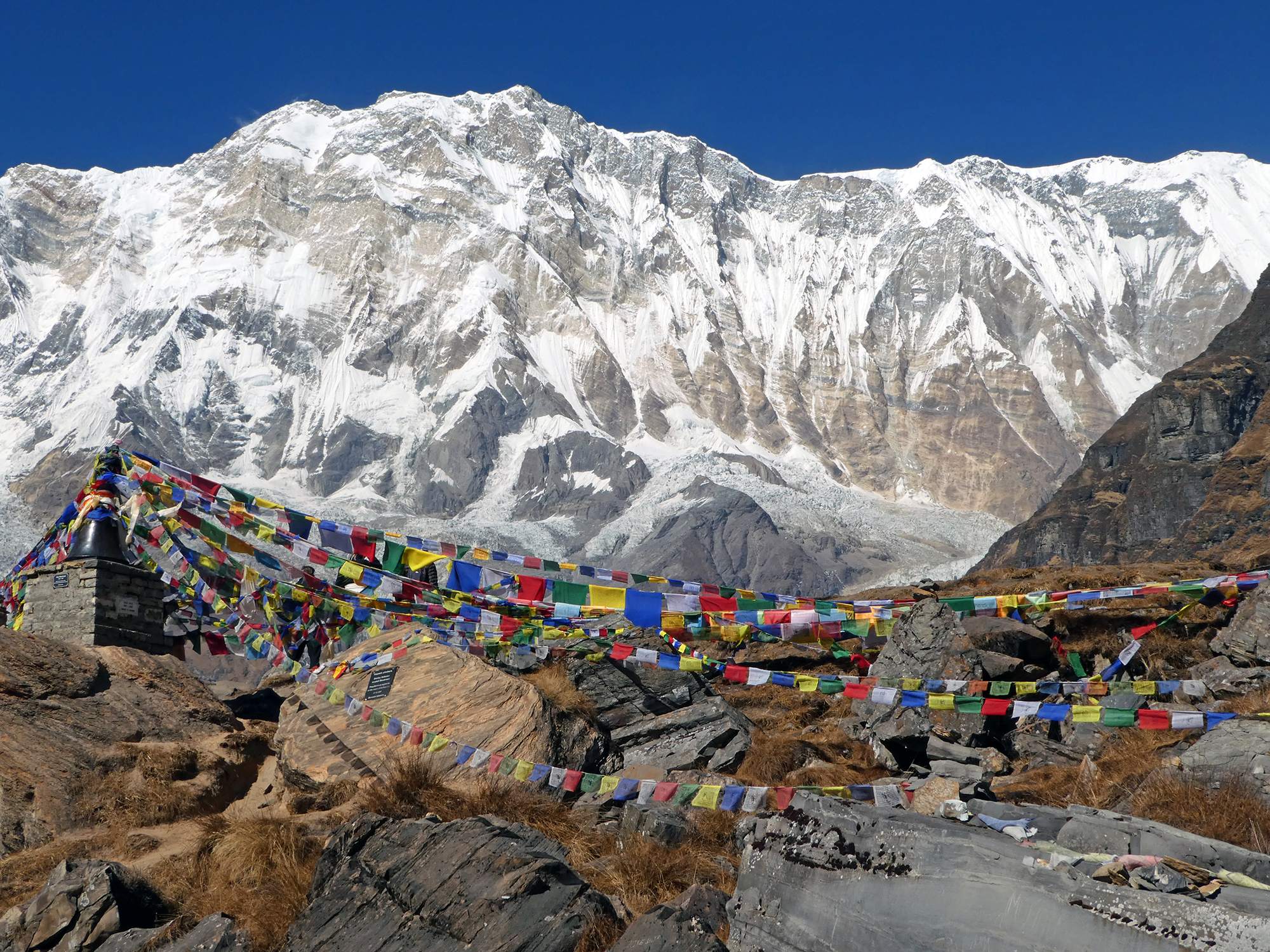1Annapurna Base Camp Trek Essential Tips for FirstTime Trekkers
Embarking on the Annapurna Base Camp trek for the first time is an exhilarating adventure, but it requires thorough preparation and awareness to ensure a safe and enjoyable experience. This trek offers breathtaking landscapes, cultural encounters, and a profound sense of achievement, but it also presents challenges that first-time trekkers should be prepared for.
One of the most crucial aspects is physical preparation. Prior to starting the trek, it is essential to engage in a training regimen that includes cardiovascular exercises, strength training, and hikes with elevation gain. This preparation builds endurance and strength, helping trekkers cope with the physical demands of the journey. Additionally, gradual acclimatization to higher altitudes is vital to prevent altitude sickness. The trek’s itinerary is designed to include acclimatization days, but understanding and recognizing symptoms of altitude sickness—such as headaches, dizziness, and nausea—can make a significant difference in your trekking experience.
Packing smartly is another key aspect for first-time trekkers. Essentials include layered clothing to adapt to varying temperatures, waterproof gear for potential rain or snow, and sturdy trekking boots that provide good ankle support and traction. Don’t forget to pack a high-quality sleeping bag, a reliable headlamp or flashlight, and a first aid kit. Lightweight, moisture-wicking clothing and trekking poles can also enhance comfort and reduce the risk of injuries.
Hydration and nutrition are critical components of a successful trek. Carrying a reusable water bottle and using purification methods to ensure safe drinking water is essential, as dehydration can be a concern at high altitudes. The local teahouses offer nutritious meals, but bringing along high-energy snacks like nuts and dried fruits can help maintain energy levels throughout the trek.
Safety is paramount on the Annapurna Base Camp trek Itinerary. It is advisable to trek with a guide or in a group for added security and local knowledge. Guides are experienced in navigating the trail, managing emergencies, and providing insights into the local culture and environment. Familiarizing yourself with the basic first aid procedures and understanding how to handle common trekking issues will further enhance your safety.
Cultural sensitivity is also an important consideration. The trek passes through traditional villages where customs and traditions are deeply respected. Being mindful of local practices, such as asking permission before taking photographs of people or participating in ceremonies, contributes to a respectful and enriching experience. Engaging with local communities and learning about their traditions can provide deeper insights into the cultural significance of the region.
Lastly, maintaining a positive attitude and flexibility is crucial. Weather conditions, trail closures, or unexpected delays can impact the trek, so being adaptable and open to changes will help manage any challenges that arise. The Annapurna Base Camp trek is not just a physical journey but a transformative experience that blends natural beauty with cultural richness. By preparing thoroughly and approaching the trek with an open mind and respectful attitude, first-time trekkers can fully embrace the adventure and create lasting memories.
Introduction
The Annapurna Base Camp trek is a remarkable adventure that takes trekkers through some of Nepal’s most stunning landscapes. Known for its breathtaking views of the Annapurna mountain range and rich cultural experiences, this trek is a dream for many outdoor enthusiasts. However, successfully completing the trek requires careful planning and preparation. From understanding the trek’s demands to packing appropriately and ensuring physical readiness, every detail contributes to a safer and more enjoyable journey. This trek traverses diverse terrains and varying altitudes, making it essential to approach it with adequate preparation and awareness. By considering the key aspects of planning, timing, gear, and conditioning, trekkers can better equip themselves for the challenges and rewards that await on this iconic Himalayan adventure.
Planning and Preparation
Effective planning and preparation are fundamental for a successful Annapurna Base Camp trek. Start by researching the trek thoroughly, including understanding the route, duration, and altitude levels. Creating a detailed itinerary helps in managing expectations and preparing for acclimatization. Securing necessary permits and ensuring proper travel insurance are crucial steps, as they provide the necessary documentation and protection for your journey. It’s also important to book accommodations and guides in advance, especially during peak trekking seasons, to avoid last-minute issues. Reviewing weather patterns and seasonal conditions can help in selecting the best time to trek. Additionally, familiarizing yourself with the local customs and cultural practices enhances the overall experience and helps in respectful interactions with local communities. By addressing these aspects of planning, you set the stage for a well-organized and enjoyable trek.
Choosing the Right Time to Trek
Selecting the right time to embark on the Annapurna Base Camp trek significantly influences the experience. The best times to trek are typically during the pre-monsoon spring (March to May) and post-monsoon autumn (September to November) seasons. During these periods, the weather is generally stable, offering clear skies and moderate temperatures, which enhance visibility of the majestic mountain peaks and provide comfortable trekking conditions. Spring brings blooming rhododendrons and vibrant flora, adding to the trek’s scenic beauty. Autumn, on the other hand, offers crisp air and clear views after the monsoon rains have settled. Conversely, the monsoon season (June to August) and winter (December to February) present challenges such as heavy rainfall, landslides, and extreme cold, which can complicate trekking conditions. Therefore, choosing the right season based on weather patterns and personal preferences ensures a more enjoyable and safer trekking experience.
Essential Gear and Packing List
Packing the right gear is crucial for the Annapurna Base Camp trek Guide, where conditions can vary significantly. Essential items include layered clothing to adapt to changing temperatures, including moisture-wicking base layers, insulating mid-layers, and a waterproof outer layer to handle rain and snow. Sturdy, well-fitting trekking boots are essential for navigating uneven terrain and providing ankle support. A high-quality sleeping bag suited for cold temperatures, a reliable headlamp with extra batteries, and trekking poles can enhance comfort and safety. Additionally, carrying a first aid kit, sunscreen, and insect repellent is important for health and well-being. Hydration solutions, such as a reusable water bottle and purification tablets, are necessary for safe drinking water. Personal items like a map or GPS device, and a camera for capturing the journey, complete the essential packing list. Properly preparing and packing these items ensures that you are well-equipped to handle the trek’s challenges and fully enjoy the experience.
Physical Conditioning and Training
Physical conditioning and training are key to successfully tackling the Annapurna Base Camp trek. The trek involves long days of walking and navigating varied terrain, including steep ascents and descents, which demand cardiovascular fitness and muscular endurance. Engaging in regular aerobic exercises, such as running, hiking, or cycling, builds the necessary stamina and improves overall fitness. Strength training focusing on the legs, core, and upper body enhances muscular strength and endurance, helping to manage the physical demands of trekking. Incorporating hill climbs or stair workouts can simulate the trek’s elevation challenges. Flexibility exercises, like stretching or yoga, reduce the risk of injuries and improve overall mobility. Gradually increasing the intensity and duration of workouts as the trek approaches ensures that your body is well-prepared for the physical exertion required. By committing to a structured training plan, trekkers can enhance their physical readiness and confidence for the journey.
Understanding the Itinerary
Understanding the itinerary of the Annapurna Base Camp trek is essential for a successful and enjoyable experience. The trek typically spans 10 to 14 days, covering diverse terrains and varying altitudes. A typical itinerary includes several key stages: starting from Kathmandu, traveling to Pokhara, and then driving to Nayapul before beginning the trek. The journey progresses through several villages, including Tikhedhunga, Ghorepani, Tadapani, Chhomrong, and Dovan, before reaching Machapuchare Base Camp and ultimately Annapurna Base Camp. Each day involves trekking a certain distance, with planned rest days to facilitate acclimatization. It’s crucial to review the daily distances and elevation gains to prepare physically and mentally. Knowing the itinerary helps in pacing yourself appropriately and managing expectations. It also allows for better preparation in terms of gear and supplies needed for each segment of the trek. Being familiar with the itinerary ensures that you can anticipate challenges, enjoy the scenic beauty, and adhere to the schedule while remaining flexible for any unforeseen changes.
Managing Altitude Sickness
Managing altitude sickness is a critical aspect of the Annapurna Base Camp trek, given the high elevations encountered. Altitude sickness, or Acute Mountain Sickness (AMS), can occur at altitudes above 2,500 meters (8,200 feet) and becomes more common as you ascend. Symptoms include headaches, nausea, dizziness, and shortness of breath. To prevent altitude sickness, gradual acclimatization is key. The trek is designed with rest days and gradual elevation gains to help your body adjust. It’s important to stay hydrated, avoid alcohol, and eat high-carbohydrate meals. If symptoms arise, it’s crucial to rest, drink plenty of fluids, and consider medications such as acetazolamide, prescribed by a healthcare provider. If symptoms worsen, descending to a lower altitude is necessary. Monitoring your condition and listening to your body are essential for preventing and managing altitude sickness, ensuring a safer and more comfortable trek.
Navigating the Trails
Navigating the trails on the Annapurna Base Camp trek Cost requires attentiveness and preparation. The trek features a variety of paths, from well-trodden routes to more rugged and less-defined trails. Using a detailed map and a GPS device can help you stay on course. It’s beneficial to familiarize yourself with the trail sections before starting, including understanding key landmarks and potential hazards. Paying attention to trail signs and markers ensures you follow the correct route. Trekking with a guide or in a group can provide additional security and local knowledge. Guides are experienced in navigating the trails and can assist with route finding and safety. Regularly checking the trail conditions and weather updates can also help in making informed decisions about the day’s trek. Proper navigation skills contribute to a smoother trek and enhance overall safety and enjoyment.
Health and Safety Precautions
Health and safety precautions are fundamental for a successful Annapurna Base Camp trek. Ensuring that you have comprehensive travel insurance, including coverage for medical emergencies and evacuation, is crucial. A well-stocked first aid kit with basic supplies, such as bandages, antiseptics, and medications for common ailments, should be part of your gear. Staying hydrated and maintaining good hygiene helps prevent illnesses. It’s important to follow safety guidelines for trekking, such as using trekking poles for stability and avoiding risky maneuvers on uneven terrain. Understanding basic first aid procedures and emergency protocols enhances your ability to respond effectively to any issues. Additionally, staying informed about the local health services and emergency contacts can be beneficial. By taking these precautions, you ensure a safer trekking experience and are better prepared to handle any challenges that arise.
Cultural Etiquette and Local Customs
Respecting cultural etiquette and local customs is vital during the Annapurna Base Camp trek, as it enriches the experience and fosters positive interactions with local communities. The trek passes through traditional villages where customs and traditions are deeply ingrained. It’s important to dress modestly and behave respectfully, especially when visiting religious sites or interacting with local residents. Always ask for permission before taking photographs of people or participating in local ceremonies. Engaging with locals and showing interest in their culture demonstrates respect and fosters goodwill. Understanding and adhering to local customs, such as removing shoes before entering homes or temples and following local greetings, contributes to a harmonious trekking experience. By embracing cultural etiquette and showing respect for local traditions, you enhance your connection with the region and contribute positively to the communities you visit.
Accommodation and Meals
Accommodation and meals play a significant role in the Annapurna Base Camp trek, influencing both comfort and overall experience. Trekkers typically stay in teahouses or lodges along the route, which offer basic amenities including beds, blankets, and shared bathrooms. These lodges vary in terms of comfort and facilities, but they provide a crucial resting place after long days of trekking. It’s advisable to book lodges in advance during peak seasons to ensure availability. Meals in the teahouses are typically simple, featuring traditional Nepali dishes like dal bhat (lentil soup with rice) and a variety of local vegetables. Some lodges also offer international options, including pasta and noodles. While food hygiene standards are generally good, it’s wise to stick to freshly cooked meals and avoid raw foods to prevent digestive issues. Being flexible and prepared for limited menu options will enhance your experience. Proper accommodation and nourishing meals are vital for maintaining energy levels and ensuring a comfortable trekking experience.
Communication and Connectivity
Communication and connectivity on the Annapurna Base Camp trek can be limited due to the remote nature of the trail. Mobile phone coverage is available in most of the villages along the route, but signal strength can be weak or intermittent in higher altitudes. It’s advisable to check with your mobile service provider about international roaming options before departure. Wi-Fi is offered in many teahouses, though it may be slow and unreliable at higher elevations. For important communications, such as emergency contact with family or updates on your trek, consider carrying a satellite phone or a communication device. These devices are especially useful in areas with no cellular coverage and provide an additional layer of security. Being aware of connectivity limitations and planning accordingly ensures that you stay in touch when necessary while embracing the digital detox that the trek offers.
Budgeting and Expenses
Budgeting and managing expenses are key components of planning for the Annapurna Base Camp trek. The cost of the trek can vary based on factors such as the time of year, length of stay, and personal preferences. Major expenses include transportation to and from Kathmandu, permits, guide and porter fees, accommodation, and meals. On average, trekkers should budget for around $30 to $50 per day for accommodation and meals, with additional costs for guide services and tips. Permits for the trek, including the Annapurna Conservation Area Permit (ACAP) and TIMS (Trekkers’ Information Management System) card, add to the overall cost. It’s also wise to allocate funds for personal expenses, such as snacks, souvenirs, and optional activities. Carrying a mix of cash in Nepali rupees is advisable, as ATMs may not be available on the trail. Proper budgeting and financial planning ensure that you manage your expenses effectively and enjoy a stress-free trekking experience.
Environmental Responsibility
Environmental responsibility is crucial when trekking To ABC in the Annapurna region to preserve its natural beauty and ecosystem. Following the “Leave No Trace” principles is essential—this includes packing out all trash, avoiding littering, and minimizing environmental impact. Stick to marked trails to prevent soil erosion and damage to vegetation. Many lodges and teahouses are adopting eco-friendly practices, such as using solar power and managing waste effectively, so supporting these initiatives helps promote sustainability. It’s also important to use biodegradable soaps and shampoos to reduce pollution in natural water sources. Engaging in local conservation efforts and respecting wildlife habitats contribute to the protection of the region’s delicate environment. By practicing environmental responsibility, trekkers help ensure that the Annapurna Base Camp trek remains a pristine and enjoyable destination for future adventurers.
Final Tips and Words of Encouragement
As you prepare for the Annapurna Base Camp trek, remember that preparation and a positive mindset are key to a successful adventure. Ensure you are well-prepared by understanding the itinerary, packing appropriately, and being physically conditioned for the trek. Embrace the challenges with flexibility and resilience, as the trek can be demanding but rewarding. Take the time to appreciate the stunning landscapes, immerse yourself in the local culture, and engage with fellow trekkers. Each step brings you closer to the awe-inspiring Annapurna Base Camp, where the panoramic views and sense of accomplishment await. Remember to pace yourself, stay hydrated, and listen to your body to ensure a safe and enjoyable experience. The trek is not only a physical journey but also a chance for personal growth and connection with nature. Approach it with enthusiasm, respect, and an open heart, and you’ll create lasting memories that will inspire future adventures.
Keep an eye for more news & updates on Glamouruer!






